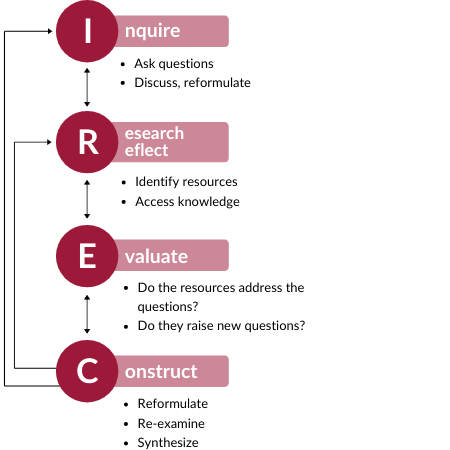
Inquiry-Based Learning is a learning method based on John Dewey’s philosophy, that education begins with the curiosity of the learner. Unlike direct instruction, the responsibility for inquiry-based learning tends to be more with the students themselves. It encourages students to understand concepts through their curiosity, actively ask questions, and try to find out the answers by themselves.
Through inquiry-based learning, students can increase their self-learning ability and exercise their thinking skills. Because this teaching method is based on students’ curiosity, students do not think that the questions they are exploring are boring. They will keep asking questions and looking for resources to find the answers. Finally, they will share their learning with others, although the answers may not be correct. This process can stimulate students to have fun with learning and can be a key help in their future studies and work. It can encourage students to build up valuable and transferable skills, including:
- Realistic goal-setting and goal-tracking
- Time- and priority-management
- Information gathering, filtering, and integration
- Critical thinking
- Communication of ideas and learning
- Self-assessment and reflection
In our inclusive learning design, we are going to teach students to solve different types of functions like linear, quadratic, exponential and etc. Inquiry-based learning partly aligns with our topic, because our course is for people who know about some basic mathematics and want to know the appeal of functions. Usually, students think mathematics is a boring subject and it has the correct answers for every single question. Functions have logic and if students do not figure it out by themselves, they may easy to give up. Therefore, inquiry-based learning can encourage students to think independently and answer through their own efforts. Even though their answers may be wrong, their learning process is progressive.
However, students may not understand the functions by their knowledge level. Our opinion is direct instruction will be the best learning method in our inclusive learning design. Through direct instruction, we have fragmented the knowledge and teach student step by step, so that they can consolidate what they have learned. At the same time, students continuously review and practice, and they will finally be able to verify their learning outcomes in the quizzes and exams.
This is the link to my groupmate, you can learn more about direct instruction. https://lingjiang1.opened.ca/instructional-approach/
Reference:
“Inquiry-Based Learning. (2023).” Queen’s Univerisity. Retrieved June 04, 2023, from https://www.queensu.ca/ctl/resources/instructional-strategies/inquiry-based-learning#:~:text=What%20is%20Inquiry%2DBased%20Learning,by%20themselves.%20Lee%20et%20al..
Hi, Haiyang
Thank you for your explanation of Inquiry-Based Learning, I have more comprehension of it in terms of our topic. I agree with your opinion that it is “based on students’ curiosity”, so learners are interested in what they are learning and willing to put effort to explore it. That is important in any learning process. Learners always learn better with their willing than passively receive knowledge. How to make our lessons interesting and attractive becomes one of our considerations when we design the lesson.
Ling Jiang